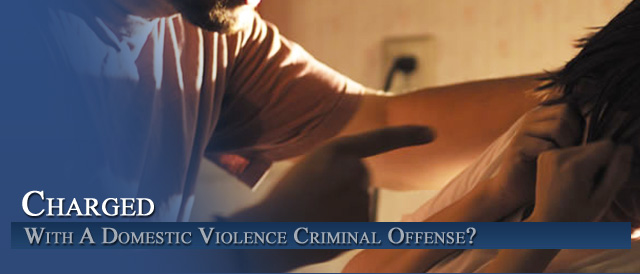




Colorado Criminal Law – Civil Restraining Orders – Common Sense Rules When You Have a Permanent Restraining Order Pending In Court Against You
What follows is an article that addresses the practical approach to criminal defense issues in defending against the making of a Temporary Colorado Civil Restraining Order – permanent.
No Contact MEANS No Contact
This is where most men truly make errors in judgement and are set up to fail.
This is really rules number one, two, and three, because if you violate it you will go directly to jail, will have instantly lost the battle. The essence of restraining orders is “no contact”, which requires absolutely no contact AT ALL, directly or indirectly. That means no cards, no letters, no calls, no emails, no text messages and no flowers to try to reconcile. Many people have gone to jail for doing just that.
Indirect contact means that you can’t call her mother, her sister, or her friend to try to reason with her to drop the order and work things out. Many more people have gone to jail for doing that. No contact means, NO CONTACT, period.
Don’t drive by her house. Don’t drive by her work or call her work. Don’t contact your children or go to their school. Don’t do anything but prepare to fight the order at the next hearing. Your heart will burst as you contemplate how unfair the legal system has become. While this may be true you will not be effective in the fight against that unfairness if you are rotting in jail. So, keep your eye on winning first, and do nothing to jeopardize that in the meantime.
Violation of a restraining order is a criminal matter, punishable by a fine and a jail term. Even though some restraining orders are civil matters which involves conflicts between two people, violations of them are criminal matters, meaning the state will prosecute a violator.
DO NOT FALL INTO A TRAP! Many men have been trapped into violating a restraining order when the woman who has taken it out actually contacts them. She may call and invite you over and ask to make up or discuss your case.
DO NOT under any circumstances, talk to or see the person who has taken out an order against you. Until the order is dismissed in court it is still in effect. The “victim” cannot give you permission to violate a court order. Only a judge can dismiss it and release you from its restrictions.
Even if the woman states that she is going to dismiss it when the hearing comes around, you should wait to make any contact until it is legally dismissed. In some states, once a protection order is set by a judge, the victim cannot ask for a dismissal. The reason is that these types of orders are so often abused that the court system is backed up. Therefore, even if the woman says she will ask for a dismissal, only the judge can decide whether it can be dismissed or not.
Another thing that can occur is that if someone sees you talking to the victim they can call the police and have you arrested.
Even if the woman tells the police that it is all right, the police must follow a court order. Remember the victim cannot give you permission to break a court order.
A man can be duped into a false sense of security. The “victim” may call you tell you she made a mistake and wants to reconcile now that she’s cooled off. If you are lulled into a false sense of security, you can find yourself handcuffed in the back of a police car the moment she gets mad at you again. Remember; do not make contact until a judge has told you that you can do so. If they contact you, hang up!
The most important part of the law governing restraining orders in Colorado is understanding the nature of the alleged acts in question – is the petitioner alleging Stalking? Domestic Violence? Assaults – Threats? Each allegation is different, but all of them have a multi-part definition which will refer to actual assault and to the term “fear” in some fashion. Many restraining orders are obtained by claiming “fear” of harm or abuse, and that is the section that needs to have the focus of the defense
Many orders are obtained because the parties yelled at each other, got into a minor scuffle, threw something, or stomped off. These encounters, while ugly, do not rise to the level of abuse defined by the law. There usually has to be actual physical assault or fear of immediate physical harm, not just a minor verbal disagreement. Colorado, unless domestic violence is alleged, does not require sexual relations as one of the necessary components for obtaining an order. The fear of abuse must be reasonable and objective not just based on a feeling. However, in reality man of these orders are granted based simply on how afraid the victim claims to feel about the other person.
Many judges regard the slightest disruption as grounds for an order, but this is not a correct interpretation of the law.
Courts operate on very technical definition. In many cases, the complaining party is charging something that may not be against the law, or fit the legal definition of fear as defined by the law.
Obtaining the Court File – Tape of the Hearing and Affidavit
One of the worst deceptions of state restraining order laws is that they do not provide that you be fully informed about the allegations against you. When you are served with an order, no one tells you that there is a court file and a recording of the “ex parte ” hearing which may contain statements and evidence clearly describing the accusations against you. This file may be invaluable for helping to prepare a defense.
Some courts treat these files as confidential. It is wrong and a denial of your rights if they do so. You are entitled to view any case information about your own case.
The most important document in the court file may be the Affidavit. An affidavit is a written statement made under oath…. the sworn statement under oath that the applicant gave to the judge to get the order against the restrained party. In addition to the petition that is served on you there may be additional details what it is you are accused of doing.
In Colorado and in most states, children can be added to an order with little more proof than the fact that they reside with the victim. Once the order including your children is obtained, it can be used for a quick and dirty custody hearing; without going through the family court and showing an actual reason for depriving you of custody.
If there is time before the next hearing, you or your lawyer should try to obtain an audio recording of the actual secret hearing where the original order may was obtained.
On the affidavit every statement should be reviewed to determine the type of evidence necessary to oppose the order, and what part of the law applies.
Preparing for the Permanent Order Hearing – Gathering Evidence
Once the court paperwork showing the allegations has been obtained – a plan to disprove the allegations is formulated. This accomplished by finding evidence to show that the allegations are false.
For example, if the complaining party states that a phone call threatening him or her was made, then it is necessary to obtain phone records showing no phone call was made at that time, or that the respondent was not at the place claimed. Cell phone records now contain data showing what cell tower the call originated from, which can show the respondent was not in the area where the person claimed he or she was.
The times of calls made and received are noted on all bills, so if no call was made on that day or time when you were alleged to have called and made a threat, it is a very good way to show that the allegations are false.
Another helpful thing about phone bills is that they may show that the person with the order, who claims to be in fear, has called several times since getting the order. This will help to convince the judge that the person is in not in fear of the respondent. Perhaps credit card receipts can place the respondent somewhere else.
Sometimes, witnesses can testify that the respondent was nowhere near the alleged place where the alleged threat was made, or the witness might have been with the respondent when the call was made. That witness can also testify that no threats were made. These witnesses can prepare sworn statements to use at the hearing if the judge permits – but they are hearsay and it is much arthritis better that they also come to the hearing. This is done by means of a subpoena.
Unless this is a friend, whom can be trusted a subpoena should be served by a sheriff so that the person has to show up. Otherwise, the witness may decide at the last minute to not get involved. If the witness is someone you know you can rely upon, they may still need a subpoena to get out of work
If the victim claims injuries, medical records showing there were none may be subpoened.
In a situation where the allegations would be impossible because of geography, a map showing why the events could not have happened as alleged may be produced. If the allegations of wrongdoing could only have succeeded if the respondent was alone, photos showing other evidence of many people being around would be relevant.
Each situation is different, your lawyer should start from what is alleged, and then put together a plan to obtain the needed facts, data, and witnesses to show that the allegations are false.
Court Procedures in the Permanent Restraining Order Hearing
Restraining order hearings are conducted informally, but evidence is still presented under oath. The Colorado rules of evidence DO APPLY and the judge should be made to enforce them.
The formal rules of evidence must be followed as far as submitting documents into evidence.
The particular judge in the case should be “scouted.” The lawyer and client should sit in and see how the specific judge in the case runs the courtroom.
The formal rules of evidence can present a hefty challenge for a person without legal training. Any documents will need to be certified or otherwise conform to very strict rules for entering evidence.
Questions must be asked in a manner that conforms to court rules.
Many people believe that if you just go to court and tell the truth, that justice will prevail. This is not always true, especially in restraining order cases. There is a pervasive bias in favor of women in restraining order cases. The respondent must be very prepared in order to have a chance to win.
Do not think justice will just happen. You have to be ready to fight your case with reason and intelligence.
“Victim-Witness” Advocates
One of the persons you may have to deal with in the restraining order cast of characters is a so-called “victim-witness” advocate, or some other similarly named interloper. The. Violence Against Women Act,. pays for these advisors to be at every court to assist complainants to obtain restraining orders.
Officially, these advocates help fill out the paperwork and suggest the phrasing that will be most likely to convince a judge that you are a menace. They have a bunch of phrases that they use, like, “I just don’t know what he is capable of doing,” or “I fear for my safety,” and many other similar vaguely sinister sounding statements….vague mumblings that do not rise to level of credible threats, but are just rhetoric.
These women usually accompany the “victim” to the hearing and stand next to her, sometimes stroking their hand, cuing tears at the right time, and otherwise emotionally manipulating the proceedings. These advocates should not be ignored. They have the potential to sway a judge.
There are many such subtle and illegitimate factors silently at work.
Understanding the Role of Motives on the Part of the Petitioner Seeking the Permanent Restraining Order
Even with persuasive evidence and witnesses, one can still lose your hearing. Thought must be put into providing the judge with plausible reason why the person got the order, other than abuse.
If he – she is claiming to have been abused or threatened with harm, an alternate explanation for why he – she got the order may be of assistance to the judge in making the final decision.
What are some possible ulterior motives other than abuse?
There are many:
A. To gain an advantage in a divorce, (Some divorce lawyers routinely advise getting one.)
B. To quickly get custody of the children without a hearing;
C. The petitioner is tired of being ignored or unloved;
D. To keep the respondent from the children as a cruel punishment;
E. To stop a modification of custody after the child expresses a desire to live with the respondent.
F. To quickly remove the respondent out of the house without an eviction or a Probate Court hearing;
G. To allow the petitioner to get a new boy/girlfriend into the picture, and the respondent out;
H. To get vengeance for some offense such as cheating;
I. To control or manipulate the respondent or to get leverage in some other way;
J. The petitioner was manipulated by a victim-witness advocate;
K. To enjoy watching the respondent suffer.
L. To obtain money and assistance from a domestic abuse shelter;
Children and the Restraining Order
In many cases, children are put on restraining orders without a basis for doing do. Often, a mother can leverage allegations about abuse or threats toward her, to also get the children included within the order. In most states, the laws require that there be a reasonable basis for putting the children on the order, and that is often not met.
If the restraining order is being used as a divorce weapon or a cheap way to get custody quickly, the focus must be on any facts relative to the children, and to determine whether any basis exists to include them. Whether the order is on their behalf primarily, or whether the mother put them on as a secondary benefit to her own order, facts must be marshaled that show that there was no abuse or threats to the children.
If the allegations about the children in the application and affidavit are weak or non-existent, then there is a good basis for removing them. Beware “abuse inflation,” which occurs when nothing was said at the original hearing, but suddenly all kinds of horrible things are alleged that the respondent beat, battered and threatened the children are invented on the spot.
Obviously, if those things were true, surely they were important enough that they would have been mentioned in the original ex parte hearing.
If possible the original recording of the secret ex parte hearing should be obtained to prove that the failure to mention any evidence concerning the children is strong evidence reinforcing the point that they do not belong on the order.
The Impact of a Permanent Restraining Order on Your Right To Bear Firearms
Under the federal „Violence Against Women Act, it is now a federal crime to have a gun or ammunition if you are the subject of a domestic abuse restraining order issued by a state. All state laws require that the defendants who are issued restraining orders must surrender their firearms and ammunition to the police.
Federal law makes such a punishable by serious jail time the situation where you take a gun across state lines with one, after being issued a restraining order.
Until the constitutional right to bear arms is given more respect, this is an ironclad rule. If you ignore it, you will pay a high price.
Types of Restraining Orders
When an order is first issued, it is done after a secret hearing, with only the complaining party there (ex parte), and the defendant is not given any notice. It is very easy for someone to make exaggerated claims and get an order, since there is no one there to object or present the other side of the story. The order will be faxed to the local police department where the defendant lives, and served by the police to the unlucky recipient.
Good day all. Tried Levitra Generic few days ago, since I wanted to make the macho impression. It was great, for the effect in 20-30 mins, but than I was owning her for cialico.com over 2 hours. This thing is great, totally loved it! The feeling when you go on while she’s cumming again and again is just amazing. I for sure recommend it.
If an order is issued at the ex parte hearing, then a second hearing is set up, at which time the defendant or responding party is notified and invited to attend. It is usually set up for about one to two weeks, which doesn.t give a lot of time to prepare. Meanwhile, the respondent has usually been tossed out of his home with nothing but the clothes on his back, no money, and no car. He is most likely an emotional wreck.
That is not a good base from which to launch a successful legal fight, but it must be done. If he doesn’t successfully get it dismissed a longer term order will be issued.
At the second hearing, when both parties are present, this is where the burden of proof is placed upon the party seeking the protection order; this burden of proof is proven under a fairly low standard. All of the preparation and information gathering is paramount in putting together a successful defense. Those persons who prepare for a hearing have a greater chance of getting the order vacated at that second hearing.
If an order is issued after a hearing, it is permanent in Colorado
See my web site for additional articles on Colorado Restraining Orders
Summarized and modified for Colorado from www.RestrainingOrder911.com
Other Articles of Interest:
- Colorado Domestic Violence Defense Ideas: What Legal Strategies Should My Attorney Consider To Defend Against The Restraining Order
- Questions and Answers About Violation of A Restraining Order in Colorado
- Colorado Domestic Violence Permanent Civil Protection Order Laws – Title 13 and 18
- Lifting Or Modifying Colorado Civil Restraining – Protection Orders Pursuant to C.R.S. 13-14-108
- Domestic Violence Defense – How To Head Off A False Accusation Of Domestic Violence












